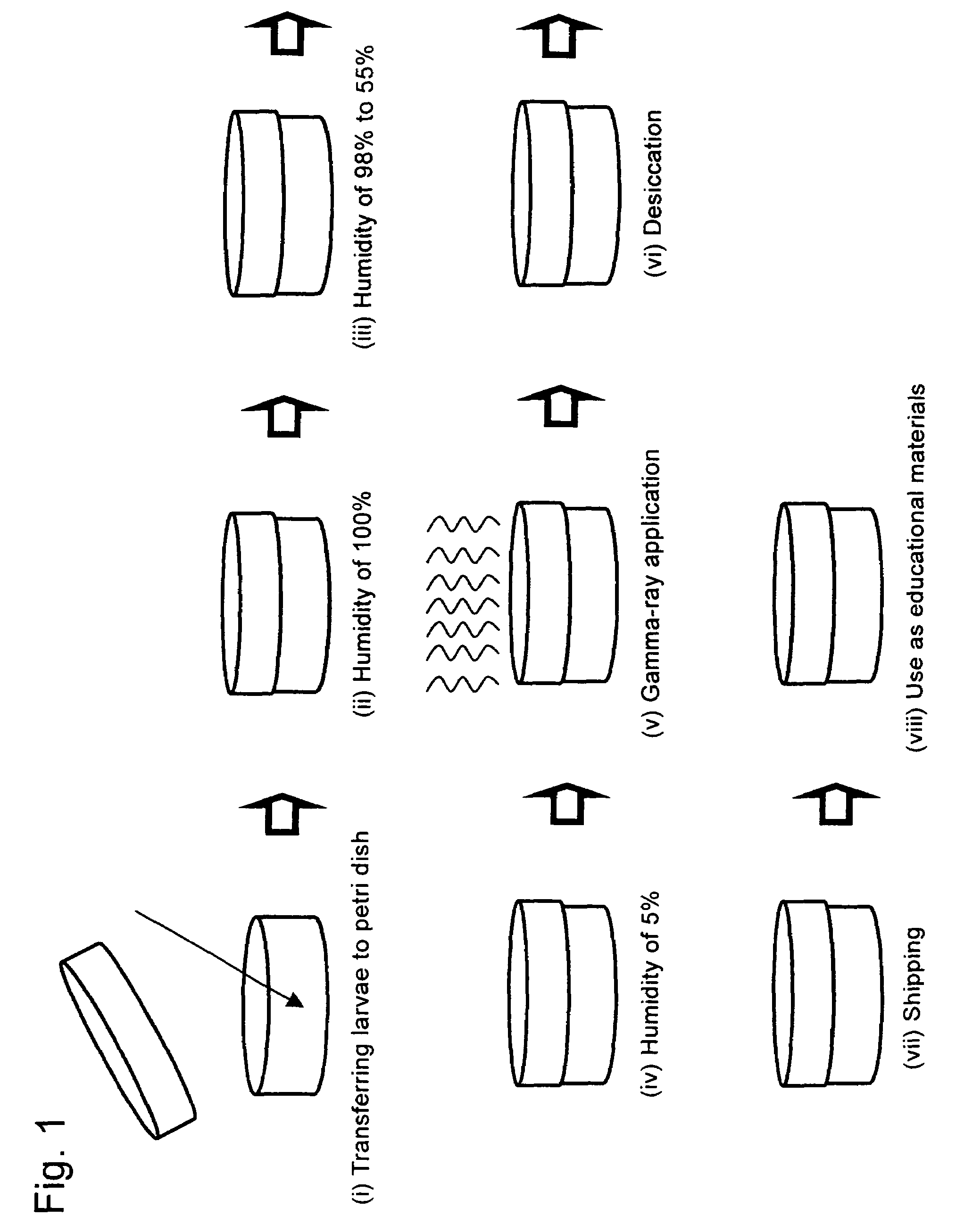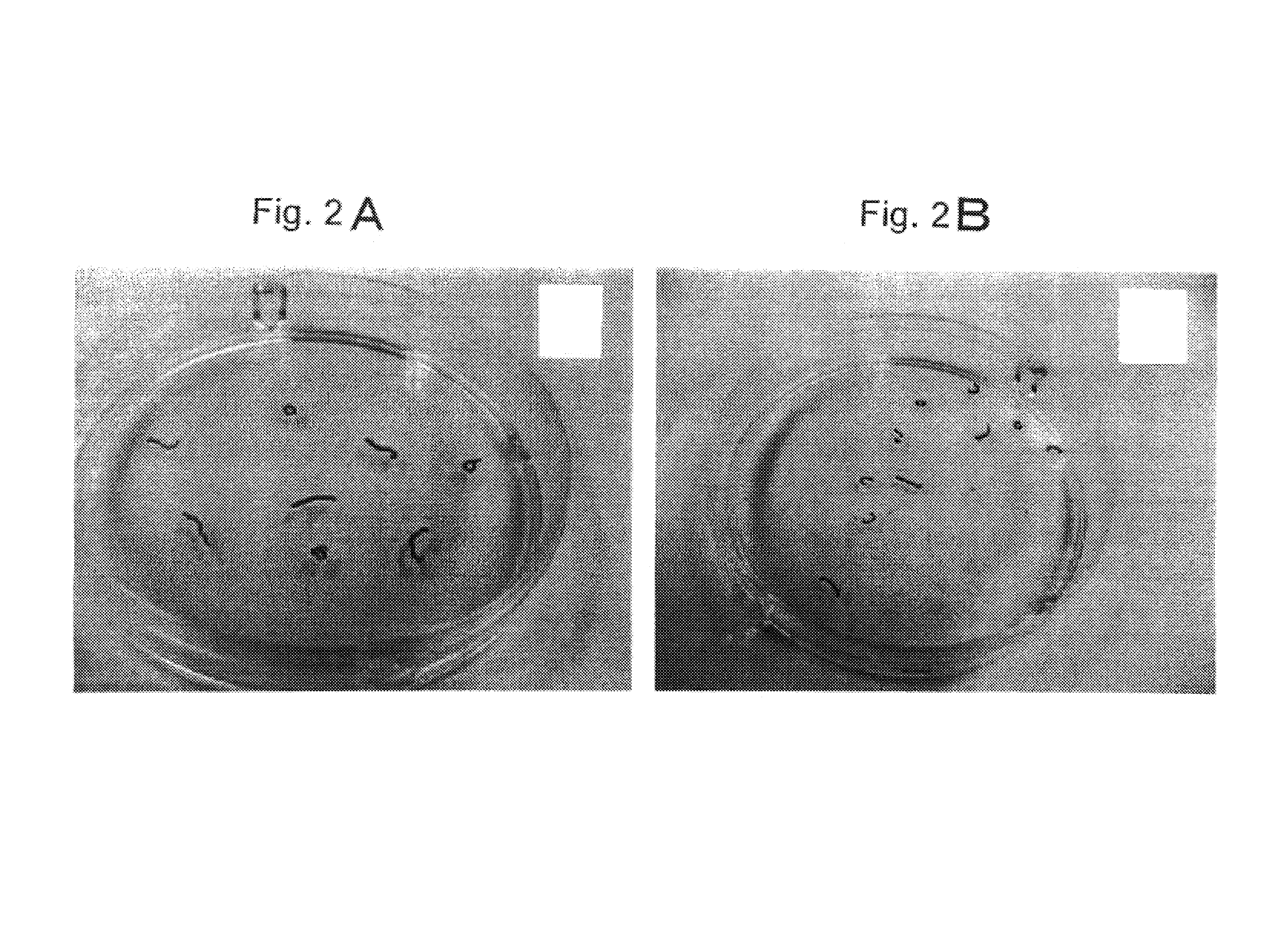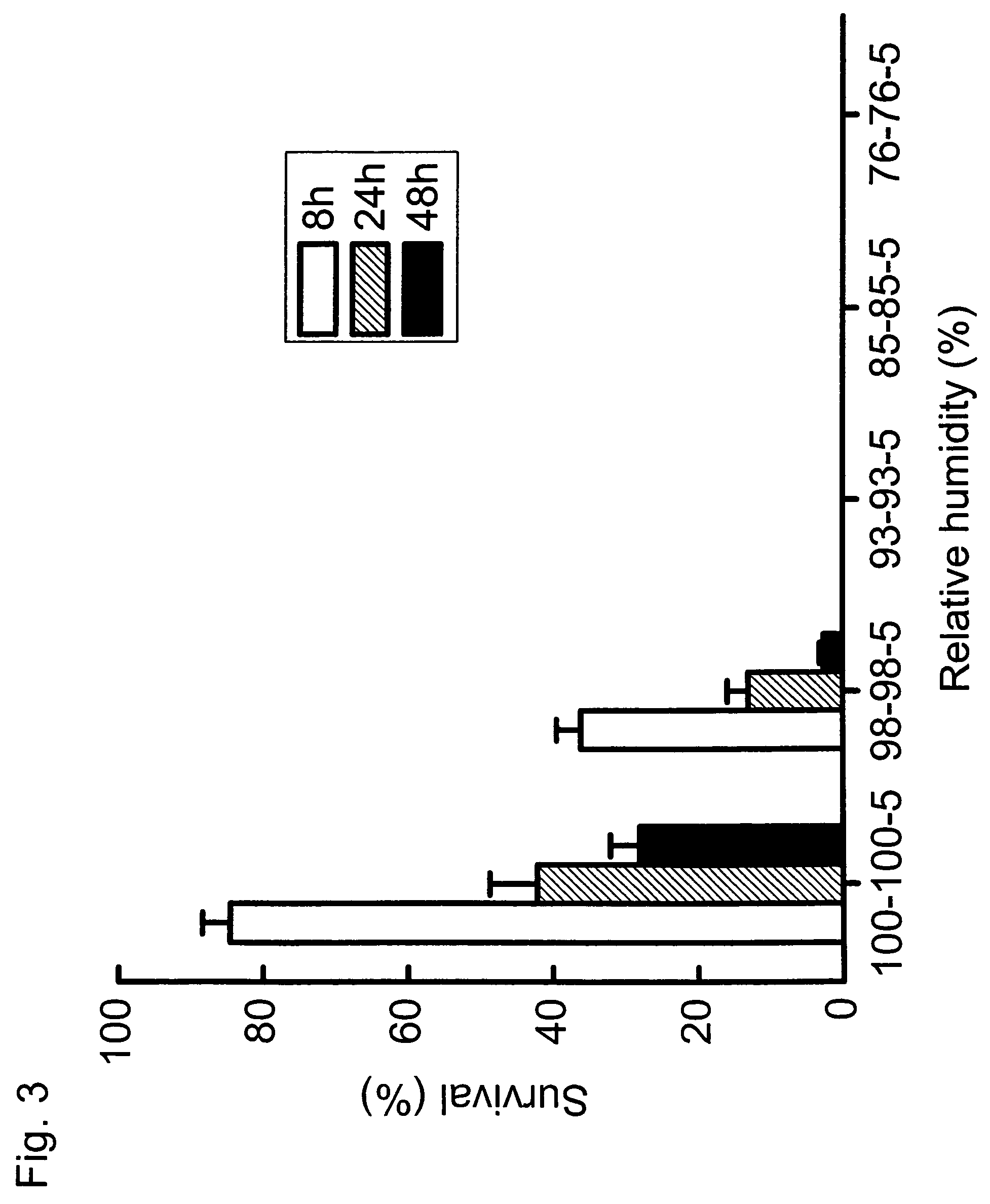Dehydration procedures for induction of cryptobiosis in insect larvae
a cryptobiosis and insect larva technology, applied in the field of dehydration procedures for induction of cryptobiosis in insect larvae, can solve the problems of insufficient dehydration of larvae, difficult to achieve the effect of cryptobiosis insect larvae, and long recovery period of larvae, etc., to achieve the effect of producing cryptobiosis insect larvae without disrupting the environmen
- Summary
- Abstract
- Description
- Claims
- Application Information
AI Technical Summary
Benefits of technology
Problems solved by technology
Method used
Image
Examples
example 1
Conditions for Dehydrating Larvae in a Plastic Petri Dish via Humidity Control
[0039]The present inventors carried out the following experiment in order to determine the conditions for dehydrating the larvae of Polypedilum vanderplanki within as short a time frame as possible by controlling the relative humidity in a 5-cm plastic vessel.
[0040]1. Approximately 10 larvae of Polypedilum vanderplanki were put in a plastic petri dish.
[0041]2. The petri dish was placed in a large vessel, the relative humidity therein was set at various levels, the petri dish was finally transferred to a desiccator with humidity of 5%, and dehydration was carried out for 1 day or longer.
[0042]As shown in FIG. 3, only several percents of larvae had survived 48 hours later when they were dehydrated under 2-stage humidity conditions, i.e., 98%-98%-5%. When they were dehydrated under conditions of 100%-100%-5%, approximately 30% of larvae were found to have survived 48 hours later.
[0043]As is apparent from FIG....
example 2
Influence of Gamma-Ray Application on Larvae of Polypedilum vanderplanki
[0046]The present inventors carried out the following experiment in order to examine the influence of gamma ray application on the growth or propagation of the larvae of Polypedilum vanderplanki.
[0047]1. A gamma ray of 1 to 3,000 gray was applied to the entire vessel containing the larvae dehydrated in the plastic petri dish.
[0048]2. The larvae to which gamma rays had been applied were rehydrated, and the survival ratio, the pupation rate, the eclosion rate, and the occurrence of propagation of larvae 48 hours later were inspected.
[0049]FIG. 7 shows the results of such inspection. The larval survival ratio was not affected by gamma-ray application of 3,000 gray 48 hours later. In contrast, the eclosion rate was not affected by gamma-ray application of 100 gray, but eclosion was inhibited by gamma-ray application of 400 gray. No fertilized egg was obtained with a dose higher than 50 gray.
[0050]Accordingly, it w...
PUM
 Login to View More
Login to View More Abstract
Description
Claims
Application Information
 Login to View More
Login to View More - R&D
- Intellectual Property
- Life Sciences
- Materials
- Tech Scout
- Unparalleled Data Quality
- Higher Quality Content
- 60% Fewer Hallucinations
Browse by: Latest US Patents, China's latest patents, Technical Efficacy Thesaurus, Application Domain, Technology Topic, Popular Technical Reports.
© 2025 PatSnap. All rights reserved.Legal|Privacy policy|Modern Slavery Act Transparency Statement|Sitemap|About US| Contact US: help@patsnap.com



